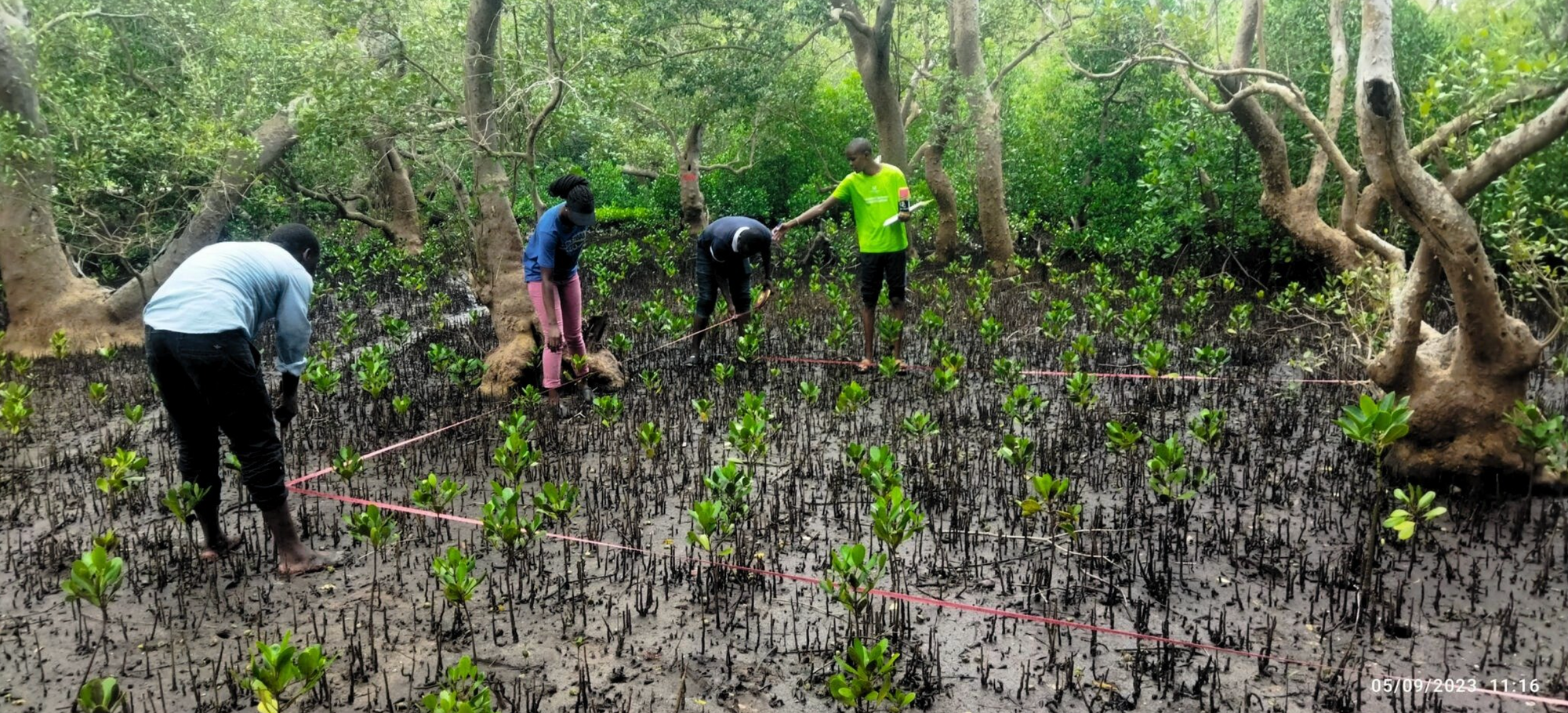How Biodiversity Monitoring is Guiding Mangrove Restoration in Kenya

Mangrove forests are more than tangled trees at the edge of the sea — they are vibrant ecosystems teeming with life. In Marereni, Kenya, where the Seatrees-supported COBEC project is restoring over 600 hectares of degraded mangroves, biodiversity monitoring has become a cornerstone of the project, which first began in 2022.
Since 2024, COBEC has established 67 biodiversity monitoring plots across the restoration landscape, including 26 as recently as May 2025. These small but critical sample sites help the team track ecological change over time, providing insight into which mangrove species thrive where, and how restoration efforts impact wildlife, fisheries, and forest health.

Each monitoring plot is methodically surveyed once a year using standardized protocols. Teams of local scientists (COBEC staff) measure tree height and diameter, root density, crab burrows, and the diversity and abundance of key invertebrate species such as crabs and snails. This rigorous process involves a lot of hard work (and sun exposure!) but it ensures that restoration is not just about the number of trees planted, but about how those trees grow, survive, and contribute to the broader ecosystem.

Beyond the trees, the team is watching for signs of ecological revival. The return of green sea turtles, improved fish populations in mangrove creeks, and increasing sightings of bird and crab species all point to growing biodiversity resilience. Local fishermen have reported healthier fish stocks, reinforcing the direct link between mangrove recovery and community well-being.
As climate pressures mount and ecosystems worldwide face uncertainty, the Marereni model shows what’s possible when data, nature, and people work together. Biodiversity monitoring is not just science — it’s stewardship. And in the muddy creeks of Kilifi County, that stewardship is restoring not only trees, but the web of life they support.

